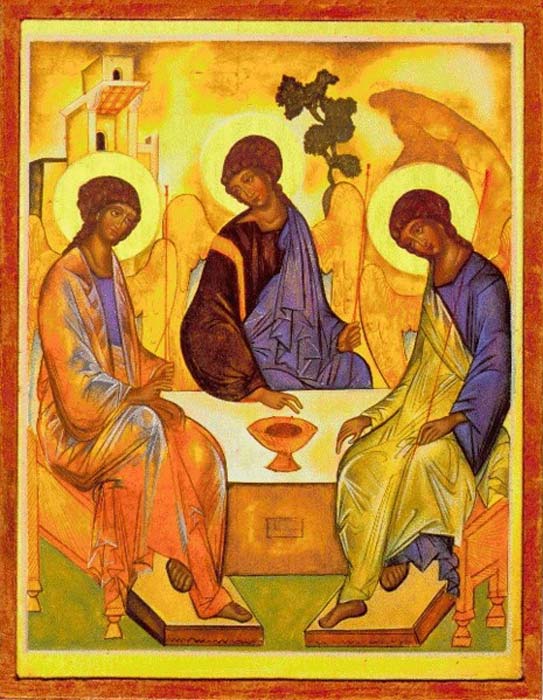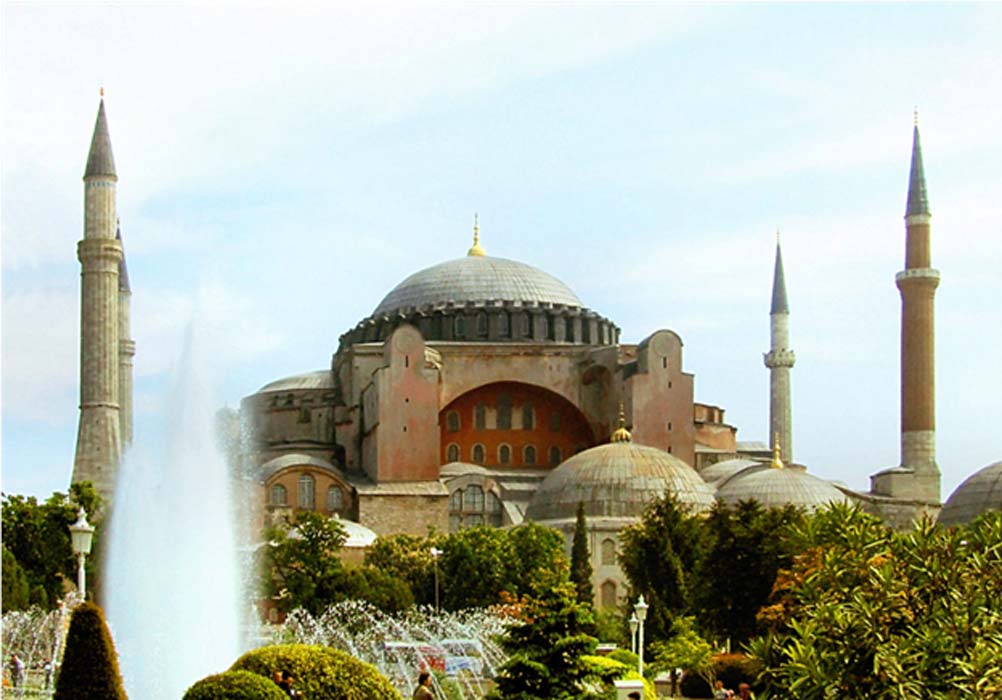How Byzantine Art and Architecture Captivated the Known World
The rich, beautiful art and opulent architecture of the Byzantine Empire glorified Jesus, the saints, the Blessed Virgin Mary and the emperors. Byzantine art motifs, the mosaics, paintings, and statuary had religious themes that sought to ally the emperors with Almighty Jesus and to depict the beauteous wonders of heaven on Earth.
Byzantine Art used to Convey Power of Emperors and Deepen the Faith of Christians
The art of the Byzantine, or the Eastern Roman Empire as it was also known early on, depicted the emperor as preeminent among humans by careful placement, size of the figure, and color. The art attempted to show the emperors’ strength and power. The emperors were often depicted alongside the Christ to emphasize their importance and to lend divine legitimacy to their rule.
The icons and paintings of the artists sought to deepen the faith of the Christians who viewed them and to spread the faith to the frontiers of the empire and beyond. Byzantine artists worked in stone mosaics, frescoes and used gold and precious metals in their works to glorify and beautify buildings, churches, and books across much of Eurasia. Much of the art that survived the Byzantine era is religious in nature.
What are the Byzantine Art Periods?
The Byzantine Empire lasted for more than 1,000 years, until 1453 AD, when the Turkish Ottoman Empire conquered the Byzantine capital, Constantinople (Istanbul). The art and architecture of the empire were divided into three phases.
Early Byzantine
From 330 to 730 AD. It was during Emperor Justinian’s rule from 527 to 565 AD that Byzantine art and architecture flowered. He instituted a building campaign primarily in Constantinople and later in Ravenna, Italy.

Holy Trinity by Andrei Rublev, a famed Russian artist who worked in the Byzantine style. (The Yorck Project / Public Domain)
The most notable building and one of the most famous in the world still today is the Hagia Sophia or Holy Wisdom church that Justinian commissioned. It has a huge dome and its interior is filled with light. The colored marble, Byzantine mosaics, and gilt highlights laid the basis and the church was a model for future Byzantine architecture.
It was also during the Early Byzantine period that artists started painting holy icons depicting almost alien-like figures of the Christ, his mother, the Madonna and Child together, and various saints and angels with long, sad faces, big eyes, and slender bodies. People from the East and West still paint such icons to this day.
Miracles were attributed to some of the icons, such as when the Image of Edessa, a portrait of Jesus, which purportedly helped the residents of that city when they were assaulted by the Persians in 593 AD.
Middle Byzantine
From 843 to 1204 AD. The empire made advance under Basil I the Macedonian. His rule started in 867 AD. He reopened universities, promoted art and literature, and called for a renewal of Greek classics and aesthetics. He established Greek as the official language of the Byzantine Empire.
![]()
An icon depicting the Archangel Gabriel, in the St. Catherine Monastery in Egypt, 13 th century. (Public Domain)
Late Byzantine
Lasted from 1261 to 1453 AD. In this era the Byzantines began to restore Orthodox churches that had been damaged during a period called the Latin Conquest, which ruined the economy and left much of Constantinople in ruins. Artists had to use more economical media. Icons depicted the suffering of the population during the Conquest. Artists endeavored to reveal compassion in their works and showed the suffering of Jesus. The center of art shifted from Constantinople to Russia, Bulgaria, Romania, and Greece. Icon artists developed regional styles.
What Were the Two Breaks in the Byzantine Style?
There were two breaks in the Byzantine art movements that also affected the political and social milieus: The Iconoclastic Controversy from 730 to 843 AD and the aforementioned Latin Occupation from 1204 to 1261 AD.
During the Middle Byzantine, the empire’s art and culture were regarded across Europe as the greatest aesthetic ideals. Foreign rulers employed Byzantine artists even if they were enemies of the Byzantine Empire.
- From Papyrus to Parchment: The Imperial Library of Constantinople
- Thousands of years of visual culture made public
- Secrets of the Hagia Sophia - Healing Powers, Mysterious Mosaics and Holy Relics

A mosaic of the Madonna and Child in Barcelona, Spain. (Enfo / CC BY-SA 3.0)
Byzantine architecture influenced Gothic architecture in Sicily and Britain after the Norman Conquest of 1066 AD because the Norman king, Roger II, had employed Byzantine artists. Italian, Greek, and Russian cities also had Byzantine movements. Byzantine architecture influenced Islamic structures also.
According to the Art Story website, Byzantine artists influenced artists and works across Europe. There have been a few Byzantine revivals since 1453 AD and still to this day artists borrow from Byzantine art in their creations.
In addition to visual art and architecture, Byzantine poetry and literature flourished. Their main themes were Christianity and the Classics. (You can read a poem by Kassia, a Byzantine poet, here.)
Top image: The Hagia Sophia, an iconic work of architecture that housed many iconic works of art. Source: (Roweromaniak / CC BY-SA 2.5)
By Mark Miller
References
Cartwright, M., Byzantine Art, Ancient History Encyclopedia, [Online] Available at: https://www.ancient.eu/Byzantine_Art/
Encyclopedia Britannica, Greek Literature: Byzantine Literature, [Online] Available at: https://www.britannica.com/art/Greek-literature/Byzantine-literature
Seiferle, R., Byzantine Art and Architecture, The Art Story website, [Online] Available at: https://www.theartstory.org/movement-byzantine-art.htm



















